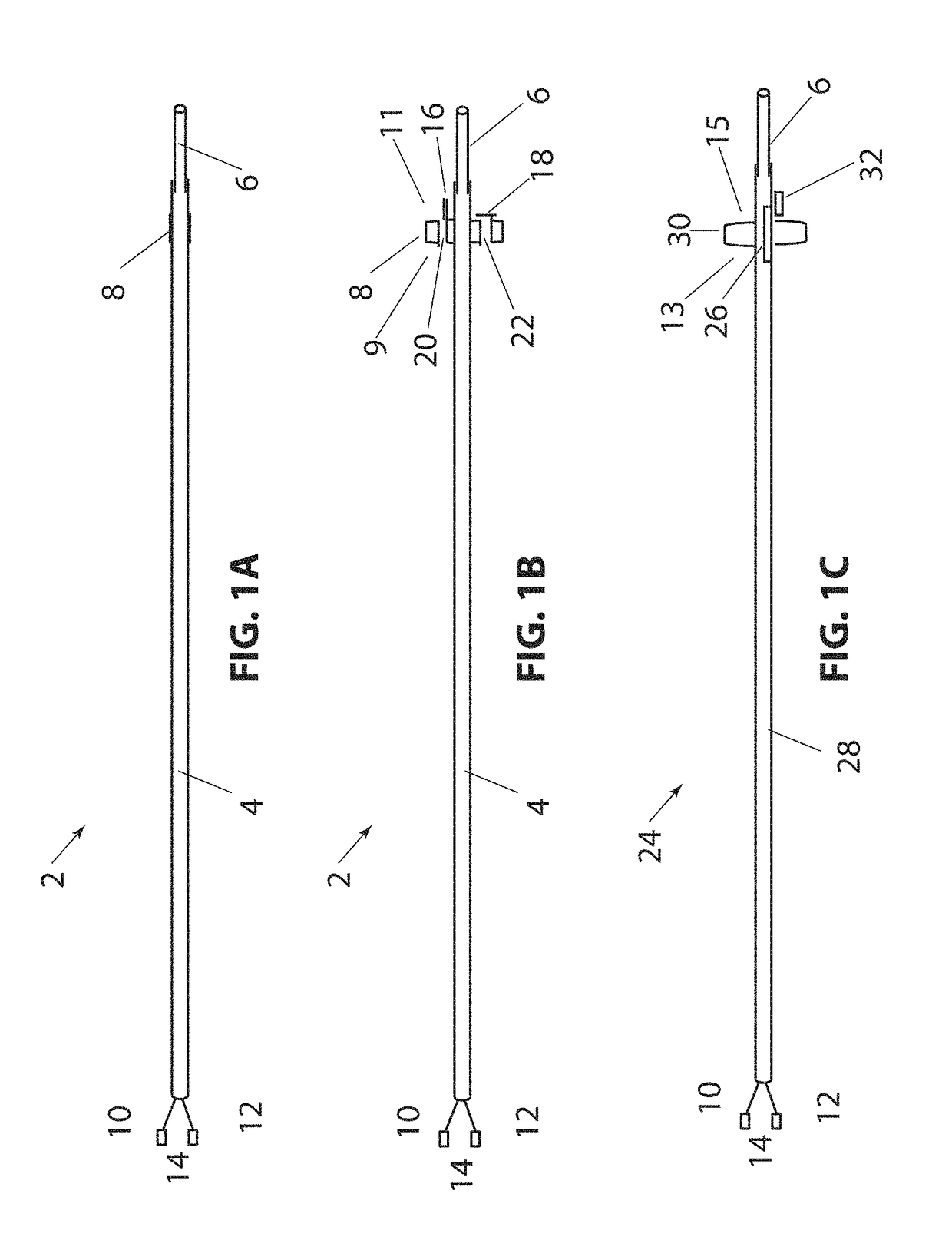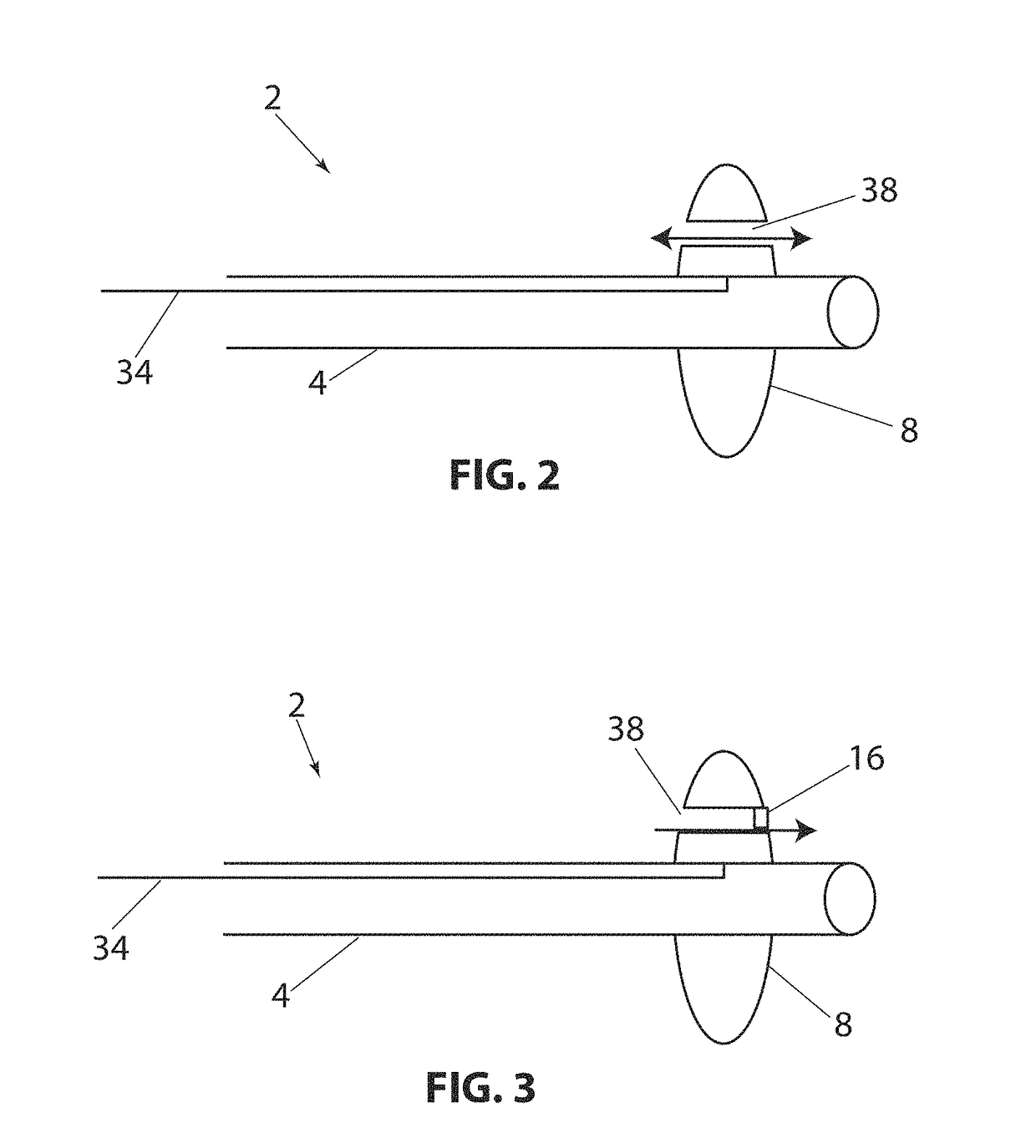Devices and methods for low pressure tumor embolization
a tumor and low-pressure technology, applied in the field of occlusion devices, can solve problems such as toxicity and complications, and achieve the effects of reducing pressure, eliminating reflux, and increasing the number of embolic particles that enter the tumor
- Summary
- Abstract
- Description
- Claims
- Application Information
AI Technical Summary
Benefits of technology
Problems solved by technology
Method used
Image
Examples
first embodiment
[0127]Referring to FIG. 1B, a longitudinal cross section of the present disclosure is shown, with device 2, balloon 8 (in the expanded configuration) having valve 16 in the open position and valve 18, in the closed position. In this embodiment flow channels 20 and 22 are constructed through balloon 8. Valves 16 and 18 allow fluid to flow in only one direction. Balloon 8 has a proximal side 9 and a distal side 11. By way of example, if fluid pressure is higher on the proximal side of balloon 8 and lower on the distal side of balloon 8, both valves 16&18 will open in response to the pressure difference and allow fluid to flow distally through the valves. If the pressure is higher on the distal side of balloon 8, valves 16 and 18 will close and prevent fluid from flowing proximally. Alternately, the valves can be position or constructed so that fluid can pass proximally and be prevented from flowing in the distal direction. Valves 16 and 18 are shown as a simple “flap” type valve, howe...
embodiment 135
[0158]Referring to FIG. 28A, a distal section of an alternate embodiment 135 of the present disclosure is shown with outer catheter 119, inner catheter 127, nose cone 125, radially constrained balloon 131 and catheter channels 123. The outer catheter 119 is adapted over inner catheter 121, the catheters configured to provide a radially distributed space between inner and outer catheters extending longitudinally along the length of device 135. Outer and inner catheters can have a length of 10 cm to 250 cm, more typically 50 cm to 150 cm and a diameter of between 0.5 Fr and 10 Fr more typically of 1 Fr to 5 Fr. Inner catheter 127 can have a length less than, equal to, or longer than the outer catheter 119, however in the present figure, inner catheter 127 is shown to be longer than outer catheter 119, its distal end forming the catheter extension 127. Nose cone 125 is disposed along the distal extension of inner catheter 127 at some distance from the distal end of outer catheter 119, ...
PUM
 Login to View More
Login to View More Abstract
Description
Claims
Application Information
 Login to View More
Login to View More - R&D
- Intellectual Property
- Life Sciences
- Materials
- Tech Scout
- Unparalleled Data Quality
- Higher Quality Content
- 60% Fewer Hallucinations
Browse by: Latest US Patents, China's latest patents, Technical Efficacy Thesaurus, Application Domain, Technology Topic, Popular Technical Reports.
© 2025 PatSnap. All rights reserved.Legal|Privacy policy|Modern Slavery Act Transparency Statement|Sitemap|About US| Contact US: help@patsnap.com



